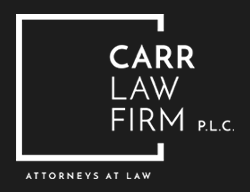Before I went to law school, I used to think that hearsay meant the same thing as rumors. You know when people say something like “don’t listen that talk, that’s just a bunch of hearsay.” But, as I soon learned in school, hearsay is one of the more complicated and confusing (even to attorneys) issues in the world of litigation.
For anyone wanting to see the Iowa Rules on hearsay for themselves (or needing to cure their insomnia) they can find the Rules on hearsay here: https://www.legis.iowa.gov/docs/ACO/CourtRulesChapter/01-31-2017.5.pdf but be warned, this is just scratching the surface. The case law on hearsay is long and varied. Keep in mind though that the purpose of this blog post is to try and explain hearsay for the everyday person, and not the practicing lawyer.
By definition, hearsay is any out of court statement offered to prove the truth of the matter asserted. The “statement” can be oral, written, or even non-verbal conduct (in some situations). So, three quick examples of hearsay would be: (oral) a witness testifies that he overheard the defendant talking about the drug deal he just made; (written) a contractor showing various purchase agreements and receipts; (non-verbal conduct) a child therapist testifies to her young client’s interactions with a therapy doll. True enough, all three are hearsay, but all three may still be admissible under one of the 30-plus hearsay exceptions that Iowa recognizes (but I’ll save that for another post).
“Offered to prove the matter asserted” is not as complicated as it sounds. It refers to the assertion being made in the alleged hearsay statement. So, if you want to show the effect that the statement had on the listener, and that effect is relevant to the case, than it may not be hearsay at all. For instance, if there is a slip and fall at a convenience and a witness overheard two employees talking a few minutes earlier about a coffee spill, that conversation may not be hearsay at all. It can be offered not to prove that there was coffee, but to prove that the employees were on notice that there was coffee.
There are other admissible statements not considered to be hearsay as well. For instance, the rules allow some leeway in dealing with witnesses who may be forgetful or may be changing their stories a bit. If a witness gave prior testimony (either in a deposition or in another hearing) that is inconsistent to what they’re currently testifying to, that prior testimony can be used in court and is not considered hearsay. Interestingly enough, if the witness is now being accused of improper motives or influence, their prior consistent testimony can be used in court to “beef up” their current testimony, and would not be considered hearsay. Lastly, an identification after witnessing an event is not hearsay. Think about a police lineup – a victim of a theft identifies the perpetrator. That identification is not considered hearsay.
As you can see, hearsay can prove to be a very sticky point in a trial, whether it’s criminal or civil case. Hearsay testimony may be the key piece of evidence that would make or break some cases. That is why having a skilled trial attorney, such as one of the lawyers at the law firm of Carr & Wright, is so important. We can navigate the difficult procedural terrain and work to ensure your best case is presented. If you are facing a legal matter, do not go it alone. Call us today at 515-875-4868 to schedule a free consultation with Marshall W. Orsini or any of our fine trial attorneys.

